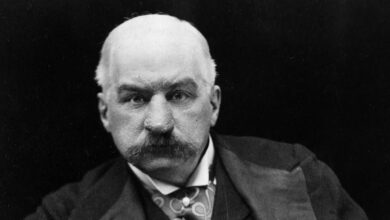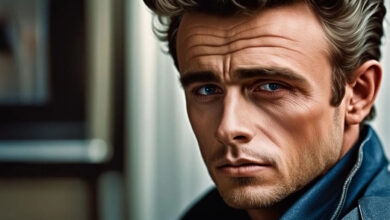“Nothing in life is to be feared, it is only to be understood. Now is the time to understand more, so that we may fear less.” – Marie Curie
Podcast: Play in new window | Download
Subscribe: Spotify | Amazon Music | Youtube Music | RSS
Marie Curie Biography
Maria Sklodowska Curie was born in Warsaw, which was then known as the Russian partition of Poland, on 7 November 1867. Maria was the youngest of five children born to teachers Bronislawa and Wladyslawa Sklodowski. Her elder siblings were three sisters Zofia, Helena and Bronislawa and a brother called Jozef. In the past, the family had been pretty well off, but they had lost their fortune and property through involvement with national uprisings aimed at restoring Polish independence. Consequently, Maria and her family were condemned to a life of struggle. Maria’s grandfather had been a teacher and his son, Maria’s father, followed in his footsteps and taught physics and mathematics. When the Russian authorities banned laboratory instruction in Polish schools, Wladislaw brought the lab equipment home and taught his children how to use it.
In 1875 disaster struck the family when Maria’s elder sister Zofia contracted typhus from one of the family’s lodgers and died. Less than three years later, in May of 1878 when Maria was only ten years old, her mother died from tuberculosis. After her mother’s death, Maria attended the boarding school of J. Sikorska before moving on to the gymnasium for girls from which she graduated with a gold medal in 1883. Because she was female, Maria couldn’t attend any higher education institutions so she and her sister Bronislawa became involved with the Flying University, a clandestine Polish patriotic place of higher learning, which did accept women.
Shortly afterwards, Bronislawa left to study in Paris and Maria took a job as a governess, first as a home tutor and then for two years with a family who were relatives of her father. In 1890, Bronislawa invited Maria to join her and her new husband in Paris, but it would take 18 months of saving sufficient funds before Maria could take up the offer. During this time, she continued to educate herself through reading books and exchanging letters. In 1889, she returned home to Warsaw and to her father and shortly after began her scientific training in a chemical laboratory at the Museum of Industry and Agriculture, which was run by her cousin Jozef Boguski who had been an assistant to Dmitri Mendeleev in St. Petersburg.
In 1891 Maria joined her sister in Paris and it was from this point forwards that she would become known as Marie. She rented a garret in the Latin Quarter of Paris and struggled to make ends meet. She studied mathematics, physics and chemistry during the day at the University of Paris and earned her keep in the evening through tutoring work. In 1893 she was awarded her degree in physics and earned a second degree in 1894.
After graduating, Marie began her scientific career investigating the magnetic properties of different steels. It was during this time that she met Pierre Curie. Their mutual love of science brought them ever closer and Pierre proposed marriage. However, Marie had wanted to go back to Poland and continue her work and studies there. She did return to Warsaw in 1894 but was denied a place at Krakow University because she was a woman. A letter from Pierre persuaded her to return to Paris and the pair were married on 26 July 1895. The dark blue outfit Marie wore in lieu of a wedding gown (neither had wanted a religious ceremony) served her for years as a laboratory outfit.
Following the discovery of X-rays by Wilhelm Roentgen in 1895 and the discovery of the properties of uranium by Henri Becquerel in 1896, Marie decided to research uranium more closely for a thesis she was putting together. Using an electrometer, which had been invented by Pierre and his brother fifteen years earlier, she found that the radiation came from the uranium atoms themselves and not as a result of an interaction with other molecules.
In 1897 Marie gave birth to a daughter called Irene and in order to support her now growing family, she began teaching at the Ecole Normale Superieure. Marie continued her studies though in a converted shed at the side of the School of Physics and Chemistry. She was studying two uranium minerals called pitchblende and torbernite and found that both were more active than the uranium itself and so she theorised that another substance must be present which was even more active than uranium. This led her to discover in 1898 that the element thorium was also radioactive. As her work became more and more intriguing, Pierre dropped his work on crystals and joined Marie in her studies.
The discovery that thorium was radioactive didn’t answer all of Marie Curie’s questions though about how active pitchblende was and so she continued to study it, theorising that there must be another substance with similar properties held within the complex material. On 14 April 1898, Marie and Pierre meticulously weighed 100 grammes of pitchblende and proceeded to grind it with a pestle and mortar, not realising that the substance they were looking for was so rare, that they would have to process tonnes of pitchblende in order to find it. In July of 1898, Marie and her husband published a joint paper in which they announced the discovery of the element they named polonium, after Marie’s native country of Poland. In December of the same year, they went on to announce the discovery of radium which would also lead them to coin the word radioactivity.
The Curies published 32 papers between 1898 and 1902. In one of them, they observed that when exposed to radium, tumor-forming cells were destroyed faster than healthy ones. During this time, in 1900, Marie became the first female faculty member of Ecole Normale Superieure. At the end of this period, in 1902, Marie would visit Poland again due to the death of her father.
In 1903, Marie was awarded her doctorate from the University of Paris, the faculty for which her husband had joined three years earlier. At the end of that year, in December, Marie was awarded the Nobel Prize in Physics along with Pierre Curie and Henri Becquerel who had discovered radioactivity. Marie initially was not going to receive a reward, but following a tip-off, Pierre complained and her name was added to the list, making her the first female recipient of the award. Due to Pierre feeling increasingly ill and because of his dislike of public ceremonies, the couple did not attend the ceremony in Stockholm. However, as Nobel laureates were required to deliver a lecture, they made the trip in 1905. The award money was put to good use, as it allowed them to employ a lab assistant.
In December of 1904, Marie Curie gave birth to a second daughter, called Eve. Two years later, tragedy would strike Marie’s life again, when Pierre was killed when he was run over by a horse-drawn carriage in heavy rain as he crossed the Rue Dauphine. In May 1906, Marie was offered the chair of the physics department which had been created for Pierre by the University of Paris. She accepted and became the first female professor at the University of Paris.
Even though Marie Curie succeeded in isolating radium, something which had eluded the Curies for years, proving her theory beyond doubt, and after defining an international standard for radioactive emissions that became known as a curie, she was still passed over for admission into the French Academy of Sciences, due to her being a foreigner and an atheist, for which she was also vilified by the French right-wing press.
Her work was receiving more and more international recognition though, which eventually led to her receiving her second Nobel prize in 1911, this time for chemistry. During the First World War, Marie Curie saw the need for battlefield radiological centres and by late 1914 she had set up France’s first military radiology centre and became director of the Red Cross Radiology Centre.
After the war, Curie spent less time on scientific discovery but travelled the world promoting the benefits of the discoveries she had made making public appearances in Belgium, Spain, Czechoslovakia and the United States where she was welcomed as a hero. In 1922 she became a fellow of the French Academy of Medicine and in 1930 she became a member of the International Atomic Weights Committee. In 1934, Marie Curie visited Poland for what would turn out to be the last time, as a few months later on 4 July 1934, she died from aplastic anaemia which it is believed was caused by her long-term exposure to radiation.
Marie was interred at the cemetery in Sceaux alongside Pierre. In honour of their achievements, and some sixty years later in 1995, their remains were transferred to the Pantheon in Paris and Marie became the first woman to receive this honour on her own merits.
Due to the levels of radioactivity, Marie Curie’s papers from the 1890’s are still too dangerous to handle without protective clothing and equipment and they are kept in lead-lined boxes.
Podcast: Play in new window | Download
Subscribe: Spotify | Amazon Music | Youtube Music | RSS




